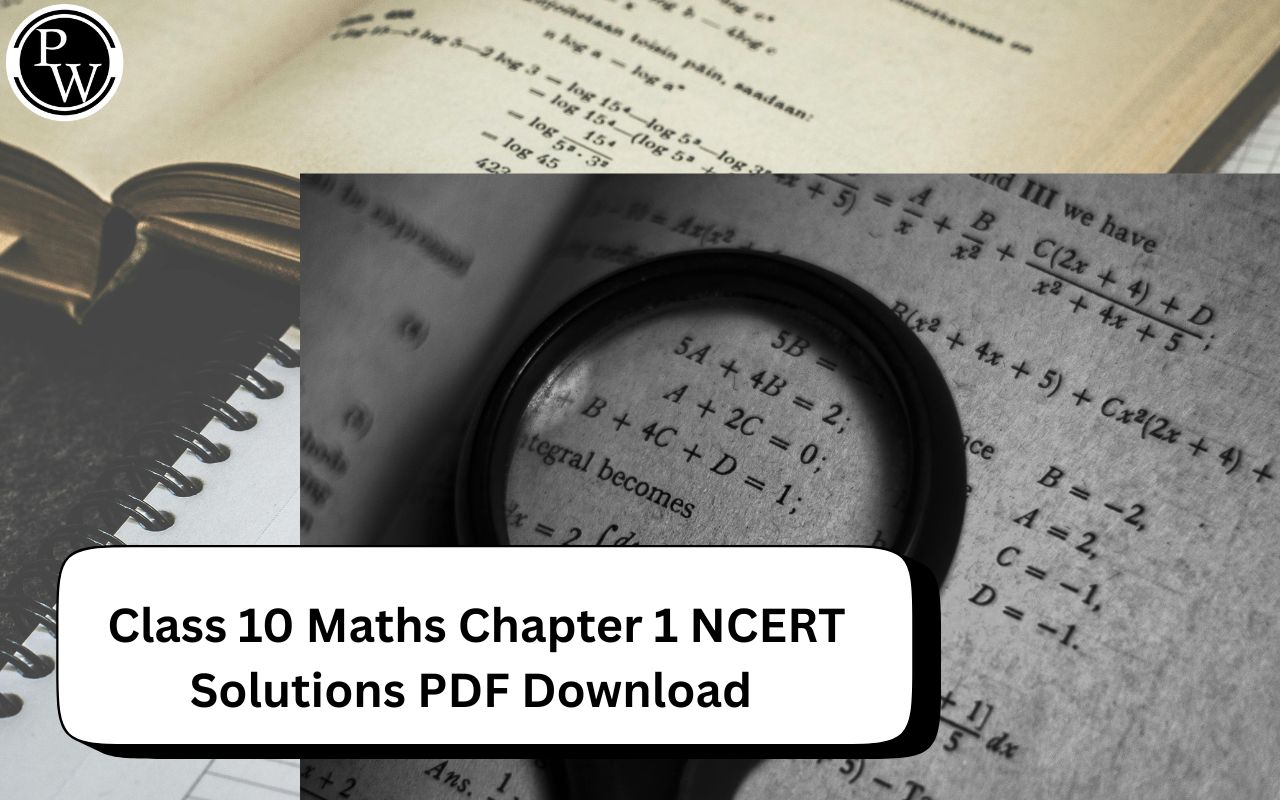

NCERT Solutions for Class 10 Maths Chapter 14: These NCERT Solutions for Class 10 Maths Chapter 14 are available for free download in PDF format. Our subject matter specialists, who are proficient in maths, have created the solutions. To assist students in completing each exercise question and efficiently preparing for the CBSE exam, all of the completed statistics problems adhere to the most recent revisions of the syllabus and requirements.
For students to receive good grades, using these solutions as a reference tool will be beneficial. Additionally, students can rehearse problem-solving by accessing the chapter-by-chapter solutions for Class 10 Math exercises.NCERT Solutions for Class 10 Maths Chapter 14 PDF
Both grouped and ungrouped frequency distributions are classified in NCERT Solutions for Class 10 Maths Chapter 14. Students must have learned how to visually display data in a variety of graphical styles, including bar graphs, histograms, and frequency polygons, in earlier classes. Here we have provided NCERT Solutions for Class 10 Maths Chapter 14 Statistics PDF, students can easily download the PDF and practice from it.NCERT Solutions for Class 10 Maths Chapter 14 PDF
NCERT Solutions for Class 10 Maths Chapter 14
1. A survey was conducted by a group of students as a part of their environment awareness program, in which they collected the following data regarding the number of plants in 20 houses in a locality. Find the mean number of plants per house.
| Number of Plants | 0-2 | 2-4 | 4-6 | 6-8 | 8-10 | 10-12 | 12-14 |
| Number of Houses | 1 | 2 | 1 | 5 | 6 | 2 | 3 |
Which method did you use for finding the mean, and why?
Solution:
To find the mean value, we will use the direct method because the numerical value of f i and x i are small. Find the midpoint of the given interval using the formula. Midpoint (x i ) = (upper limit + lower limit)/2| No. of plants (Class interval) | No. of houses Frequency (f i ) | Mid-point (x i ) | f i x i |
| 0-2 | 1 | 1 | 1 |
| 2-4 | 2 | 3 | 6 |
| 4-6 | 1 | 5 | 5 |
| 6-8 | 5 | 7 | 35 |
| 8-10 | 6 | 9 | 54 |
| 10-12 | 2 | 11 | 22 |
| 12-14 | 3 | 13 | 39 |
| Sum f i = 20 | Sum f i x i = 162 |
2. Consider the following distribution of daily wages of 50 workers of a factory.
| Daily wages (in Rs.) | 500-520 | 520-540 | 540-560 | 560-580 | 580-600 |
| Number of workers | 12 | 14 | 8 | 6 | 10 |
Find the mean daily wages of the workers of the factory by using an appropriate method .
Solution: Find the midpoint of the given interval using the formula. Midpoint (x i ) = (upper limit + lower limit)/2 In this case, the value of mid-point (x i ) is very large, so let us assume the mean value, a = 550. Class interval (h) = 20 So, u i = (x i – a)/h u i = (x i – 550)/20 Substitute and find the values as follows:| Daily wages (Class interval) | Number of workers frequency (f i ) | Mid-point (x i ) | u i = (x i – 550)/20 | f i u i |
| 500-520 | 12 | 510 | -2 | -24 |
| 520-540 | 14 | 530 | -1 | -14 |
| 540-560 | 8 | 550 = a | 0 | 0 |
| 560-580 | 6 | 570 | 1 | 6 |
| 580-600 | 10 | 590 | 2 | 20 |
| Total | Sum f i = 50 | Sum f i u i = -12 |
3. The following distribution shows the daily pocket allowance of children of a locality. The mean pocket allowance is Rs 18. Find the missing frequency f.
| Daily Pocket Allowance(in c) | 11-13 | 13-15 | 15-17 | 17-19 | 19-21 | 21-23 | 23-35 |
| Number of children | 7 | 6 | 9 | 13 | f | 5 | 4 |
| Class interval | Number of children (f i ) | Mid-point (x i ) | f i x i |
| 11-13 | 7 | 12 | 84 |
| 13-15 | 6 | 14 | 84 |
| 15-17 | 9 | 16 | 144 |
| 17-19 | 13 | 18 | 234 |
| 19-21 | f | 20 | 20f |
| 21-23 | 5 | 22 | 110 |
| 23-25 | 4 | 24 | 96 |
| Total | f i = 44+f | Sum f i x i = 752+20f |
4. Thirty women were examined in a hospital by a doctor, and the number of heartbeats per minute were recorded and summarised as follows. Find the mean heartbeats per minute for these women, choosing a suitable method.
| Number of heart beats per minute | 65-68 | 68-71 | 71-74 | 74-77 | 77-80 | 80-83 | 83-86 |
| Number of women | 2 | 4 | 3 | 8 | 7 | 4 | 2 |
| Class Interval | Number of women (f i ) | Mid-point (x i ) | u i = (x i – 75.5)/h | f i u i |
| 65-68 | 2 | 66.5 | -3 | -6 |
| 68-71 | 4 | 69.5 | -2 | -8 |
| 71-74 | 3 | 72.5 | -1 | -3 |
| 74-77 | 8 | 75.5 = a | 0 | 0 |
| 77-80 | 7 | 78.5 | 1 | 7 |
| 80-83 | 4 | 81.5 | 2 | 8 |
| 83-86 | 2 | 84.5 | 3 | 6 |
| Sum f i = 30 | Sum f i u i = 4 |
Related Links -
5. In a retail market, fruit vendors were selling mangoes kept in packing boxes. These boxes contained varying number of mangoes. The following was the distribution of mangoes according to the number of boxes.
| Number of mangoes | 50-52 | 53-55 | 56-58 | 59-61 | 62-64 |
| Number of boxes | 15 | 110 | 135 | 115 | 25 |
Find the mean number of mangoes kept in a packing box. Which method of finding the mean did you choose?
Solution: The given data is not continuous, so we add 0.5 to the upper limit and subtract 0.5 from the lower limit as the gap between two intervals is 1. Here, assumed mean (a) = 57 Class size (h) = 3 Here, the step deviation is used because the frequency values are big.| Class Interval | Number of boxes (f i ) | Mid-point (x i ) | u i = (x i – 57)/h | f i u i |
| 49.5-52.5 | 15 | 51 | -2 | -30 |
| 52.5-55.5 | 110 | 54 | -1 | -110 |
| 55.5-58.5 | 135 | 57 = a | 0 | 0 |
| 58.5-61.5 | 115 | 60 | 1 | 115 |
| 61.5-64.5 | 25 | 63 | 2 | 50 |
| Sum f i = 400 | Sum f i u i = 25 |
6. The table below shows the daily expenditure on food of 25 households in a locality.
| Daily expenditure(in c) | 100-150 | 150-200 | 200-250 | 250-300 | 300-350 |
| Number of households | 4 | 5 | 12 | 2 | 2 |
Find the mean daily expenditure on food by a suitable method.
Solution: Find the midpoint of the given interval using the formula. Midpoint (x i ) = (upper limit + lower limit)/2 Let us assume the mean (a) = 225 Class size (h) = 50| Class Interval | Number of households (f i ) | Mid-point (x i ) | d i = x i – A | u i = d i /50 | f i u i |
| 100-150 | 4 | 125 | -100 | -2 | -8 |
| 150-200 | 5 | 175 | -50 | -1 | -5 |
| 200-250 | 12 | 225 = a | 0 | 0 | 0 |
| 250-300 | 2 | 275 | 50 | 1 | 2 |
| 300-350 | 2 | 325 | 100 | 2 | 4 |
| Sum f i = 25 | Sum f i u i = -7 |
7. To find out the concentration of SO 2 in the air (in parts per million, i.e., ppm), the data was collected for 30 localities in a certain city and is presented below:
| Concentration of SO 2 ( in ppm) | Frequency |
| 0.00 – 0.04 | 4 |
| 0.04 – 0.08 | 9 |
| 0.08 – 0.12 | 9 |
| 0.12 – 0.16 | 2 |
| 0.16 – 0.20 | 4 |
| 0.20 – 0.24 | 2 |
Find the mean concentration of SO 2 in the air.
Solution: To find out the mean, first find the midpoint of the given frequencies as follows:| Concentration of SO 2 (in ppm) | Frequency (f i ) | Mid-point (x i ) | f i x i |
| 0.00-0.04 | 4 | 0.02 | 0.08 |
| 0.04-0.08 | 9 | 0.06 | 0.54 |
| 0.08-0.12 | 9 | 0.10 | 0.90 |
| 0.12-0.16 | 2 | 0.14 | 0.28 |
| 0.16-0.20 | 4 | 0.18 | 0.72 |
| 0.20-0.24 | 2 | 0.22 | 0.44 |
| Total | Sum f i = 30 | Sum (f i x i ) = 2.96 |
8. A class teacher has the following absentee record of 40 students of a class for the whole term. Find the mean number of days a student was absent.
| Number of days | 0-6 | 6-10 | 10-14 | 14-20 | 20-28 | 28-38 | 38-40 |
| Number of students | 11 | 10 | 7 | 4 | 4 | 3 | 1 |
| Class interval | Frequency (f i ) | Mid-point (x i ) | f i x i |
| 0-6 | 11 | 3 | 33 |
| 6-10 | 10 | 8 | 80 |
| 10-14 | 7 | 12 | 84 |
| 14-20 | 4 | 17 | 68 |
| 20-28 | 4 | 24 | 96 |
| 28-38 | 3 | 33 | 99 |
| 38-40 | 1 | 39 | 39 |
| Sum f i = 40 | Sum f i x i = 499 |
9. The following table gives the literacy rate (in percentage) of 35 cities. Find the mean
literacy rate.
| Literacy rate (in %) | 45-55 | 55-65 | 65-75 | 75-85 | 85-98 |
| Number of cities | 3 | 10 | 11 | 8 | 3 |
| Class Interval | Frequency (f i ) | (x i ) | u i = (x i – 70)/10 | f i u i |
| 45-55 | 3 | 50 | -2 | -6 |
| 55-65 | 10 | 60 | -1 | -10 |
| 65-75 | 11 | 70 = a | 0 | 0 |
| 75-85 | 8 | 80 | 1 | 8 |
| 85-95 | 3 | 90 | 2 | 6 |
| Sum f i = 35 | Sum f i u i = -2 |
1. The following table shows the ages of the patients admitted to a hospital during a year:
| Age (in years) | 5-15 | 15-25 | 25-35 | 35-45 | 45-55 | 55-65 |
| Number of patients | 6 | 11 | 21 | 23 | 14 | 5 |
Find the mode and the mean of the data given above. Compare and interpret the two
measures of central tendency.
Solution: To find out the modal class, let us the consider the class interval with high frequency. Here, the greatest frequency = 23, so the modal class = 35 – 45, Lower limit of modal class = l = 35, class width (h) = 10, f m = 23, f 1 = 21 and f 2 = 14 The formula to find the mode is Mode = l + [(f m – f 1 )/ (2f m – f 1 – f 2 )] × h Substitute the values in the formula, we get Mode = 35+[(23-21)/(46-21-14)]×10 = 35 + (20/11) = 35 + 1.8 = 36.8 years So the mode of the given data = 36.8 years Calculation of Mean: First find the midpoint using the formula, x i = (upper limit +lower limit)/2| Class Interval | Frequency (f i ) | Mid-point (x i ) | f i x i |
| 5-15 | 6 | 10 | 60 |
| 15-25 | 11 | 20 | 220 |
| 25-35 | 21 | 30 | 630 |
| 35-45 | 23 | 40 | 920 |
| 45-55 | 14 | 50 | 700 |
| 55-65 | 5 | 60 | 300 |
| Sum f i = 80 | Sum f i x i = 2830 |
Related Links -
2. The following data gives the information on the observed lifetimes (in hours) of 225
electrical components:
| Lifetime (in hours) | 0-20 | 20-40 | 40-60 | 60-80 | 80-100 | 100-120 |
| Frequency | 10 | 35 | 52 | 61 | 38 | 29 |
Determine the modal lifetimes of the components.
Solution: From the given data the modal class is 60–80. Lower limit of modal class = l = 60, The frequencies are: f m = 61, f 1 = 52, f 2 = 38 and h = 20 The formula to find the mode is Mode = l+ [(f m – f 1 )/(2f m – f 1 – f 2 )] × h Substitute the values in the formula, we get Mode = 60 + [(61 – 52)/ (122 – 52 – 38)] × 20 Mode = 60 + [(9 × 20)/32] Mode = 60 + (45/8) = 60 + 5.625 Therefore, modal lifetime of the components = 65.625 hours.3. The following data gives the distribution of total monthly household expenditure of 200
families of a village. Find the modal monthly expenditure of the families. Also, find the
mean monthly expenditure:
| Expenditure (in Rs.) | Number of families |
| 1000-1500 | 24 |
| 1500-2000 | 40 |
| 2000-2500 | 33 |
| 2500-3000 | 28 |
| 3000-3500 | 30 |
| 3500-4000 | 22 |
| 4000-4500 | 16 |
| 4500-5000 | 7 |
| Class Interval | f i | x i | d i = x i – a | u i = d i /h | f i u i |
| 1000-1500 | 24 | 1250 | -1500 | -3 | -72 |
| 1500-2000 | 40 | 1750 | -1000 | -2 | -80 |
| 2000-2500 | 33 | 2250 | -500 | -1 | -33 |
| 2500-3000 | 28 | 2750 = a | 0 | 0 | 0 |
| 3000-3500 | 30 | 3250 | 500 | 1 | 30 |
| 3500-4000 | 22 | 3750 | 1000 | 2 | 44 |
| 4000-4500 | 16 | 4250 | 1500 | 3 | 48 |
| 4500-5000 | 7 | 4750 | 2000 | 4 | 28 |
| f i = 200 | f i u i = -35 |
4. The following distribution gives the state-wise teacher-student ratio in higher secondary schools of India. Find the mode and mean of this data. Interpret the two measures
| No of students per teacher | Number of states / U.T |
| 15-20 | 3 |
| 20-25 | 8 |
| 25-30 | 9 |
| 30-35 | 10 |
| 35-40 | 3 |
| 40-45 | 0 |
| 45-50 | 0 |
| 50-55 | 2 |
| Class Interval | Frequency (f i ) | Mid-point (x i ) | f i x i |
| 15-20 | 3 | 17.5 | 52.5 |
| 20-25 | 8 | 22.5 | 180.0 |
| 25-30 | 9 | 27.5 | 247.5 |
| 30-35 | 10 | 32.5 | 325.0 |
| 35-40 | 3 | 37.5 | 112.5 |
| 40-45 | 0 | 42.5 | 0 |
| 45-50 | 0 | 47.5 | 0 |
| 50-55 | 2 | 52.5 | 105.0 |
| Sum f i = 35 | Sum f i x i = 1022.5 |
5. The given distribution shows the number of runs scored by some top batsmen of the world in one- day international cricket matches.
| Run Scored | Number of Batsman |
| 3000-4000 | 4 |
| 4000-5000 | 18 |
| 5000-6000 | 9 |
| 6000-7000 | 7 |
| 7000-8000 | 6 |
| 8000-9000 | 3 |
| 9000-10000 | 1 |
| 10000-11000 | 1 |
Find the mode of the data.
Solution: Given data: Modal class = 4000 – 5000, l = 4000, class width (h) = 1000, f m = 18, f 1 = 4 and f 2 = 9 Mode Formula: Mode = l + [(f m – f 1 )/ (2f m – f 1 – f 2 )] × h Substitute the values Mode = 4000 + [(18 – 4)/ (36 – 4 – 9)] × 1000 = 4000 + (14000/23) = 4000 + 608.695 = 4608.695 = 4608.7 (approximately) Thus, the mode of the given data is 4608.7 runs.6. A student noted the number of cars passing through a spot on a road for 100 periods each of 3 minutes and summarized it in the table given below. Find the mode of the data:
| Number of cars | Frequency |
| 0-10 | 7 |
| 10-20 | 14 |
| 20-30 | 13 |
| 30-40 | 12 |
| 40-50 | 20 |
| 50-60 | 11 |
| 60-70 | 15 |
| 70-80 | 8 |
NCERT Solutions for Class 10 Maths Chapter 14 FAQs
How many exercise are there in Chapter 14?
What is chapter 14 in maths class 10?
What is the mode formula?












